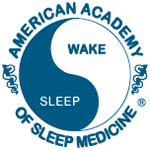People with REM sleep behavior disorder act out vivid, action-packed dreams while remaining asleep. They may shout, punch, kick, run and even jump out a window.
RBD was first reported in the journal Sleep in 1986. Sixteen years later a follow-up report was published by the same research team.
Recently the AASM reviewed all of the current research and developed a best practice guide for the treatment of RBD. It was published last month in the Journal of Clinical Sleep Medicine.
The guide recommends two steps in the treatment of RBD. The first step is injury prevention. The second step is the ongoing use of medication to control the symptoms.
People with RBD often injure themselves or their bedpartner during sleep. So it is important to create a safe sleeping environment.
The bedpartner may need to sleep in another room. Other examples of how to modify the sleep environment include:
- Placing your mattress on the floor
- Using a sleeping bag
- Moving furniture away from the bed
- Adding soft padding to the corners of furniture
- Securing and blocking windows
- Removing weapons and sharp objects from the bedroom
These methods of injury prevention should be continued while taking medication. One drug that is suggested for the treatment of RBD is clonazepam.
A typical dose is 0.25 mg to 2.0 mg, taken 30 minutes before bedtime. But a dose as high as 4.0 mg has been reported.
There can be significant side effects when taking clonazepam. These may include morning sleepiness, confusion and memory problems. It should be used with caution in people with dementia.
Clonazepam also can increase the severity of obstructive sleep apnea. So it should be used with caution in people with OSA.
Melatonin also is suggested for the treatment of RBD. The effective dose may range from 3 mg to 12 mg at bedtime.
An advantage of melatonin is that there are few side effects. Dose-related side effects may include morning headache, morning sleepiness and hallucinations.
A variety of other medications may be useful in treating RBD. But the evidence is limited.
Treatment for RBD should be supervised by a board-certified sleep specialist. You can get help from a board-certified sleep specialist at an AASM-accredited sleep center near you.
Read more about REM sleep behavior disorder.







No comments:
Post a Comment